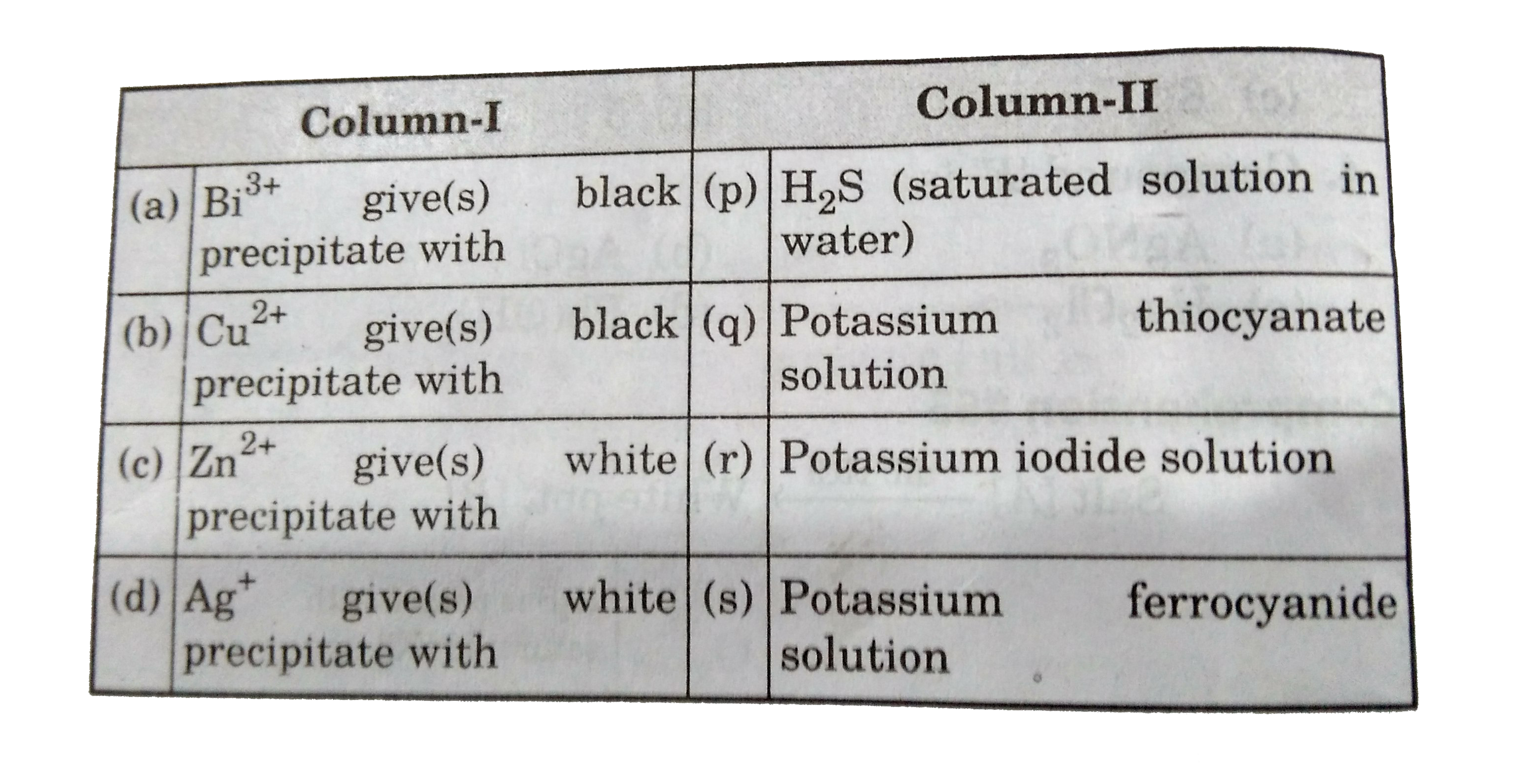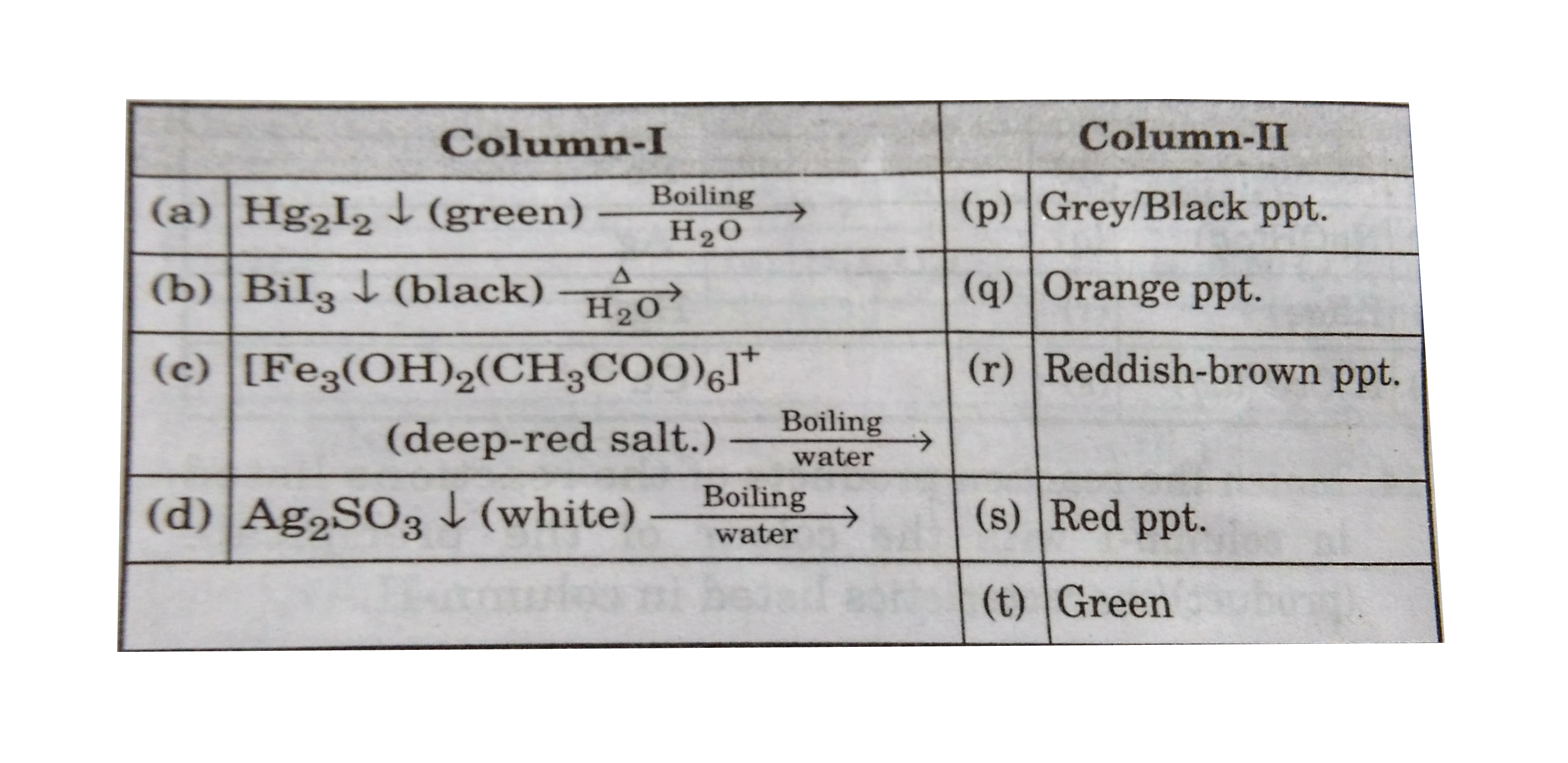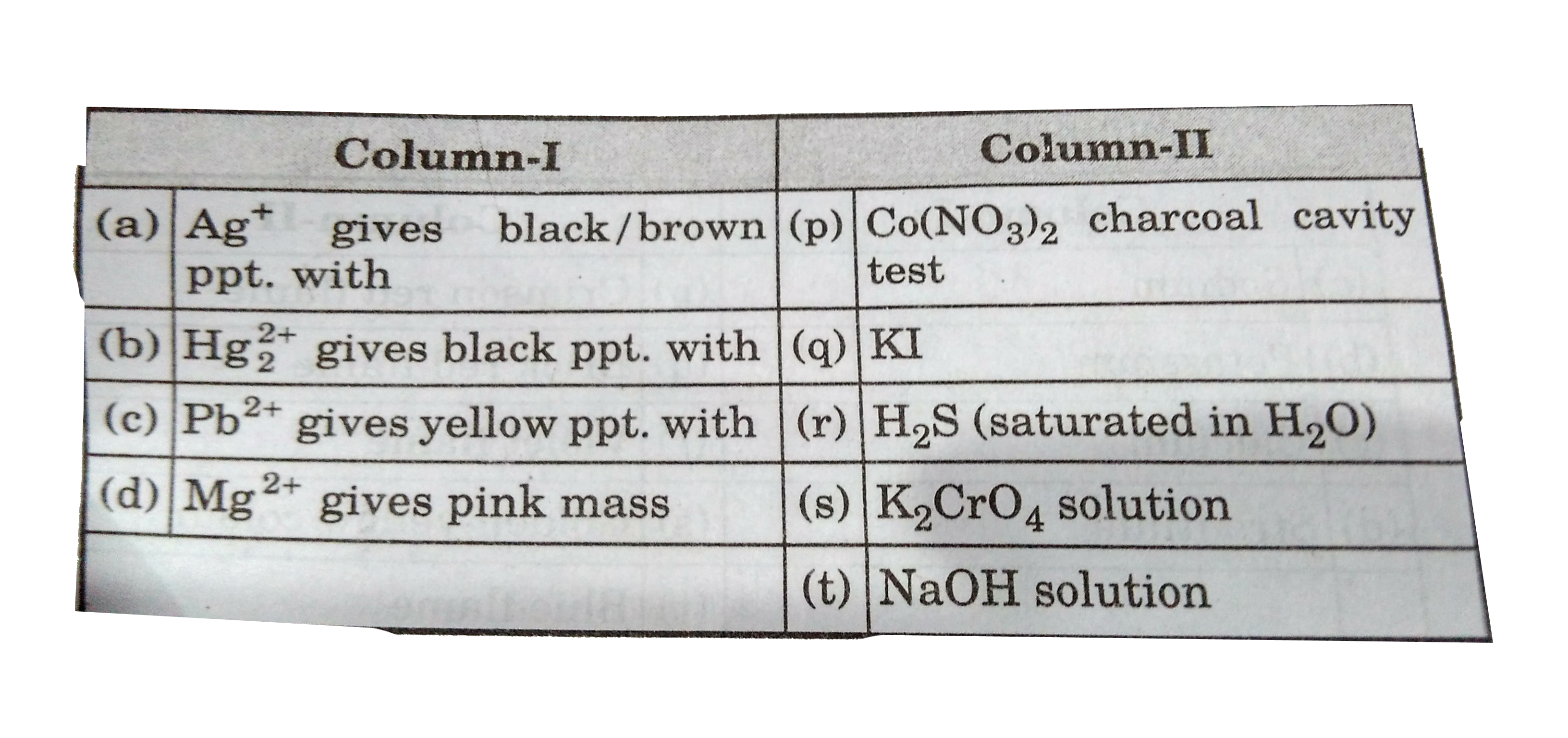Match the colour of precipitate listed in column-I with the reagent(s) listed in column II.
Column−IColumn−II(A)Bi3+gives black precipitate with(p)Saturated solution ofH2Sin water(B)Cu2+gives black precipitate with(q)Potassium thiocyanate soluion(C)Zn2+gives white precipitate with(r)Potassium iodide solution(D)Ag+gives white precipitate with(s)Potassium ferrocyanide solution(t)Potassium chloride
The correct Answer is:A→p,r ; B→p,q ; C→p,s ; D→q,s,t
(A)2Bi3++3H2S→Bi2S3⏐↓(black)+6H+
Bi3+→3I−→BiI3⏐↓ (black)
(B)Cu2++H2S→CuS⏐↓(black)+2H+
Cu2++2SCN−→Cu(SCN)2⏐⏐↓(black)
which one standing slowly changes to white
2Cu(SCN)2→2Cu(SCN)⏐↓(white)+(SCN)2
Cu2I2 is white precipitate and Cu2[Fe(CN)6] brown precipitate
(C )Zn2++H2S→ZnS⏐↓(white)+2H+
2K++2Fe(CN)6]4−+3Zn2+→K2Zn3[Fe(CN)6]2⏐⏐↓(white)
ZnI2→soluble
(D)4Ag++[Fe(CN)6]4−→Ag4[Fe(CN)6]⏐⏐↓(white)
Ag++SCN−→AgSCN⏐↓(white)
Ag2S↓ black , AgI↓ yellow
Topper's Solved these Questions
Similar Questions
A red solid is insoluble in water.However it becomes soluble if some KI is added to water.Heating the red solid in a test tube results in liberation of some violet coloured fumes and droplets of a metal appear on the cooler parts of the test tube.The red solid is :
View SolutionSodium (Na=23) crystallizes in bcc arrangement with the interfacial separation between the atoms at the edge 53.6±. The density of sodium crystal is :
View SolutionMatch the following column of precipitate/mass listed in Column I with the reagent (s) listed in Column II:

View SolutionA metal nitrate solution reacts with dilute hydrochloric acid to give a white precipitate which is soluble in concentarted potassium chloride. White precipitate on passing of hydrogen sulphidegas is converted into black precipitation. The black precipitate on boiling with hydrogen peroxide (3%) is converted again to a white precipitate which is soluble in ammonium acetate. The cation of the metal nitrate is:
View SolutionMatch the colour of the precipitates listed in column-I with the suitable reagent(s) in column-II.

View SolutionMatch the products of the reactions listed in column-I with the colour of the precipitate(s) listed in column-II

View SolutionMatch the colour of precipitate/residue in column-I with the reagent(s) listed in column-II.

View SolutionMatch the precipitate of the compounds listed in (I) with the solvent(s) listed in column(II). {:(Column-I,Column-II),((A)Zn(OH)_2"precipitate dissolves in",(p)"Potassium cyanide"),((B)Cr(OH)_3"precipitate dissolves in",(q)"Ammonia"),((C )AgCl"precipitate dissolves in",(r)"Sodium hydroxide"),((D)CuS "precipitate dissolves in",(s)"Sodium peroxide"),(,(t)50% HNO_3):}
View SolutionMatch the salts listed in column I with the colour of the precipitate and reagent listed in column II.
Column IColumn II(A)FeSO4(p)Green precipitate with NaOH(B)Bi(NO3)3(q)White precipitate withPb(NO3)2(C)Ni(NO3)2(r)Yellow precipitate withNH4NO2andCH3COOHon warming(D)CoCl2(s)Black precipitate withH2S(t)White precipitate with excess of water
View SolutionA metal salt solution forms a yellow precipitate with potassium chromate in acetic acid, a white precipitate with dilute H2SO4 but gives no precipitate with sodium chloride or iodide, it is
View SolutionA solution containing a group-IV cation gives a precipitate on passing, H2S. A solution of this precipitate in dil. HCl produces a white precipitate with NaOH solution and bluish-white prcipitate with basic potassium ferrocyanide. The cation is :
View SolutionA solution containing a group-IV cation gives a precipitate on passing, H_(2)S . A solution of this precipitate in dil. HCl produces a white precipitate with NaOH solution and bluish-white prcipitate with basic potassium ferrocyanide. The cation is :
View SolutionThe ferrous ion in a given sample is detected by the formation of a white precipitate on the addition of a potassium ferrocyanide solution to it. The precipitate has the constitutional formula:
View SolutionThe solution of (B) in conc. HCl on treatment with potassium ferrocyanide gives a blue colour or precipitate of compound (D).
View SolutionA solution containing a group-IV cation gives a precipitate on passing, H2S. A solution of this precipitate in dil. HCl produces a white precipitate with NaOH solution and bluish-white precipitate with basic potassium ferrocyanide. The cation is :
View Solution
